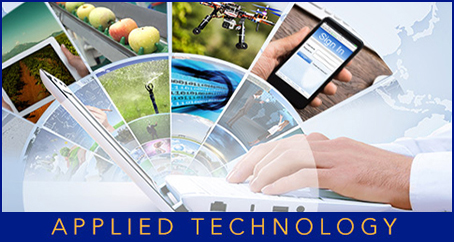Technological innovation continues to transform agriculture, and in the twenty-first century goals have evolved as growers seek to cope with labor shortages, reduce water usage, better target chemical applications, and increase efficiency. Hear the latest from those developing solutions and the broad impact of their real-world applications.
Like their predecessors, growers continually seek new technologies. Self-driving tractors, drones that scour the land for pests, and robots to pick fruit are just a few of the advances in use or being tested. Experts say these, as well as a number of highly anticipated tools, have the potential to transform agriculture as surely as the cotton gin.
Agriculture, in general, and the fresh fruit and vegetable industry in particular, are not yet highly automated according to Minos Athanassiadis, managing partner at Fresh Link Group, an advisory services firm for agriculture-related businesses headquartered in Bakersfield, CA. Nonetheless, he and others in the field see forces at work that will lead to an automation revolution in the industry.
Less Labor, More Information
The driving force behind much of today’s automation is the ongoing labor shortage. “The labor shortage is at a critical state; farmers are leaving crops in the field because labor is too expensive or there’s not enough available,” confirms Manoj Karkee, associate professor at Washington State University, working on a prototype for an automated apple harvester. With between 15 and 18 billion apples harvested for fresh consumption every year in Washington State, growers often struggle to find enough workers to pick them.
The same problem faces strawberry growers on the opposite coast, inspiring collaboration among competitors to find a remedy. Gary Wishnatzki, cofounder of Harvest CROO Robotics and owner of Wish Farms in Plant City, FL, spearheaded efforts to develop a robotic strawberry picker due to the dwindling labor pool.
He believes Mexican demographics are mirroring our own, with an aging workforce and families having fewer children. Combined with Mexico’s expanding economy and the availability of better paying jobs, why should workers cross the border into a volatile political atmosphere? In the not-too-distant future, Wishnatzki believes Mexico itself will become “an importer of labor.”
Research by R. Karina Gallardo, another associate professor at Washington State University, echoes Wishnatzki’s observations. Immigration from Mexico, which provides 70 to 75 percent of agricultural labor for all specialty crops, is not only declining but highly unpredictable. “The H-2A Visa brings in a pool of workers,” she contends, “but relying on H-2A immigration is not a sustainable solution in the long run.”



